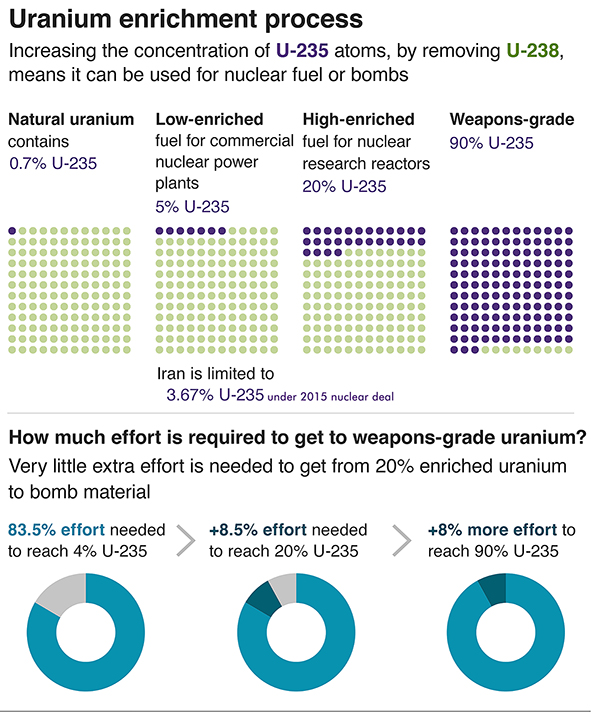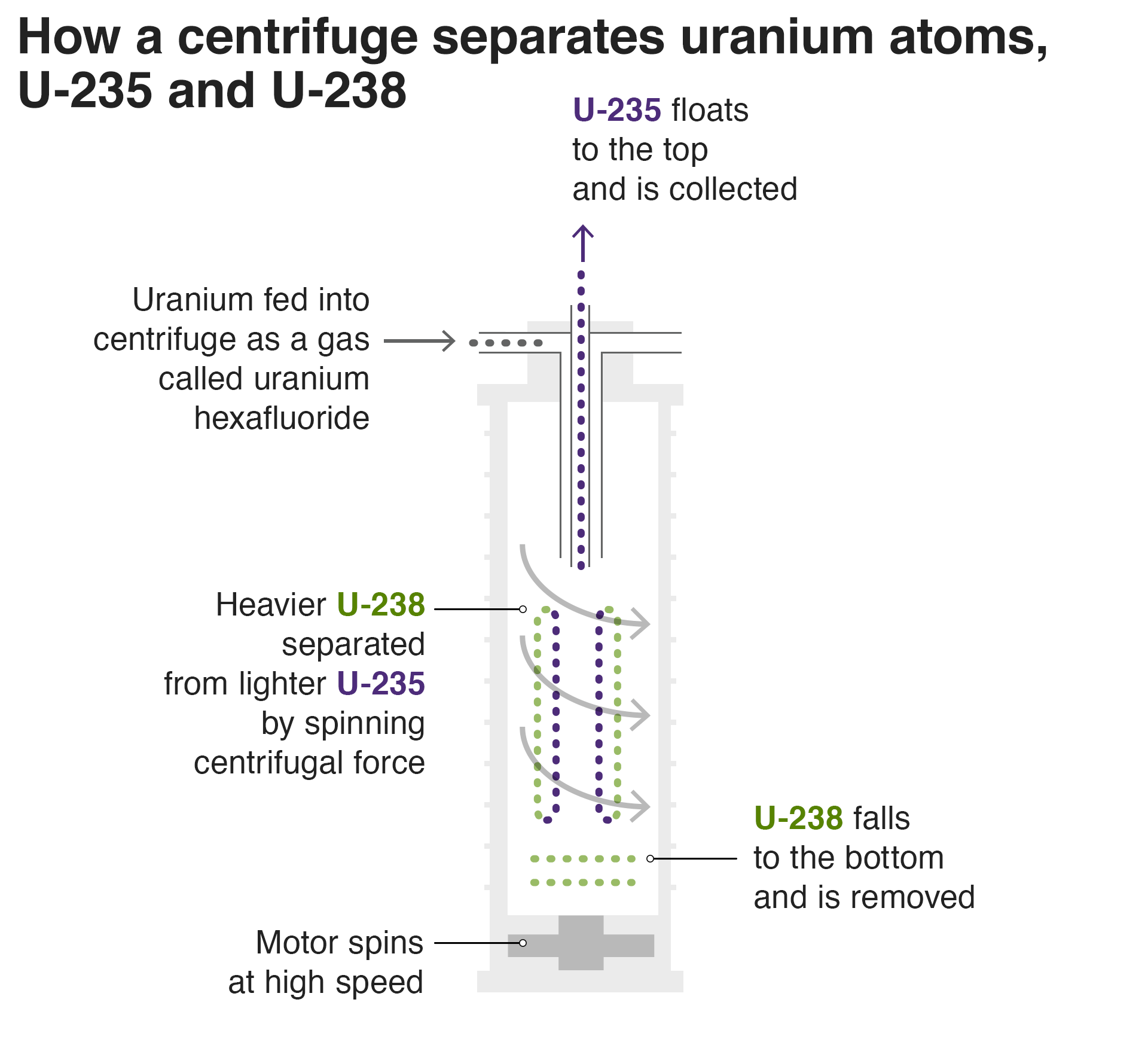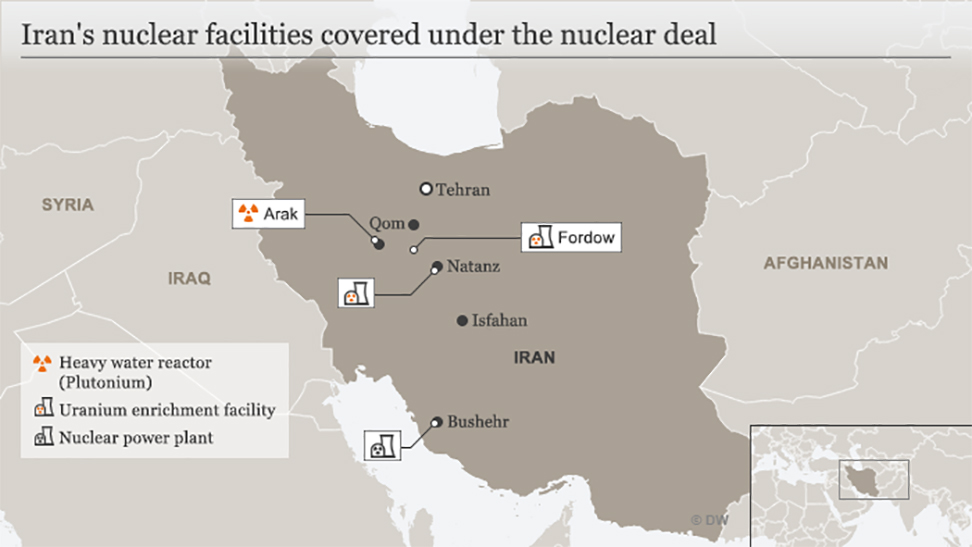International Relations
Enriched Uranium Stockpile by Iran
- 06 Nov 2021
- 3 min read
Why in News
Recently, Iran’s atomic agency said that its stockpile of 20% enriched uranium has reached over 210 kilograms.
- In April 2021, the International Atomic Energy Agency (IAEA) said Iran had begun the process of enriching uranium to 60% fissile purity at an above-ground nuclear plant at Natanz.
- Under the historic 2015 nuclear deal between Iran and the World Powers, Iran was not meant to enrich uranium above 3.67%. Enriched uranium above 90% can be used for nuclear weapons.
Key Points
- Uranium Enrichment:
- Natural uranium consists of two different isotopes - nearly 99% U-238 and only around 0.7% of U-235.
- U-235 is a fissile material that can sustain a chain reaction in a nuclear reactor.
- Enrichment process increases the proportion of U-235 through the process of isotope separation (U-238 is separated from U-235).
- For nuclear weapons, enrichment is required upto 90% or more which is known as weapons-grade uranium.
- Low-enriched uranium, which typically has a 3-5% concentration of U-235, can be used to produce fuel for commercial nuclear power plants.
- Highly enriched uranium has a purity of 20% or more and is used in research reactors.
- Natural uranium consists of two different isotopes - nearly 99% U-238 and only around 0.7% of U-235.
- Associated Concerns:
- The tricky process of enrichment becomes far easier and requires fewer centrifuges as it moves into the higher purities.
- In other words, getting to 90% purity is much easier starting from 20%, and easier still starting from 60%.
- 2015 Nuclear Deal:
- In 2015, Iran with the P5+1 group of world powers - the USA, UK, France, China, Russia, and Germany agreed on a long-term deal on its nuclear programme.
- The deal was named as Joint Comprehensive Plan of Action (JCPOA) and in common parlance as Iran Nuclear Deal.
- Under the deal, Iran agreed to curb its nuclear activity in return for the lifting of sanctions and access to global trade.
- The agreement allowed Iran to accumulate small amounts of uranium for research but it banned the enrichment of uranium, which is used to make reactor fuel and nuclear weapons.
- Iran was also required to redesign a heavy-water reactor being built, whose spent fuel would contain plutonium suitable for a bomb and to allow international inspections.
- In May 2018, the USA abandoned the deal criticising it as flawed and reinstated and tightened its sanctions.
- Since sanctions were tightened, Iran has been steadily breaking some of its commitments to pressure the remaining signatories to find a way to provide sanctions relief.
- After months of delays, the European Union, Iran and the US have recently announced that indirect talks to resuscitate the deal would resume on 29th November 2021 in Vienna.
- In 2015, Iran with the P5+1 group of world powers - the USA, UK, France, China, Russia, and Germany agreed on a long-term deal on its nuclear programme.









